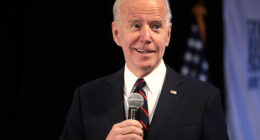Liberal Media Outlet Admits This Govt Agency May Be Beyond Repair

Over the last 16 months, many Americans have questioned the government and health care industry’s response to Covid-19. Dr. Anthony Fauci and the Centers for Disease Control and Prevention (CDC) have also faced tough questions about their decisions. But their answers and actions haven’t inspired confidence with a good number of Americans.
And it’s forced a liberal media outlet to ask an obvious question.
The New York Times Magazine recently published an article titled “Can the C.D.C. Be Fixed?” It was written by Times staff writer and editorial board member Jeneen Interlandi. Her analysis casts a lot of doubt on its ability to handle future health situations, and ordinary public health issues.
The article paints a picture of an agency with outdated systems, and poor internal communication.
After investigating the agency, Interlandi reports that:
“The C.D.C. maintains more than 100 separate disease-specific computer systems… and many of those can’t interface with one another. Crucial data is often shepherded from health care facilities to health departments through a tortured process. (It) can involve handwritten notes, manual spreadsheets, fax machines and snail mail.”
Bill Hanage, a public health scientist at Harvard University, agrees with this conclusion. He’s quoted as saying that the CDC has “no rational plan behind it.” Its “random patchwork collaborations were initiated and transformed… and now have an outsize impact on our understanding of public health.”
Interlandi adds:
“It’s not uncommon for basic information like race, ethnicity, age or address to be missing from clinical reports. It’s also not uncommon for those reports to languish at the state or local level (and never get to) federal officials. Even the most serious diseases, which are supposed to be logged within 24 hours of detection and reported to the C.D.C. in a timely way, are not necessarily sent up that chain in any systematic manner.”
Plus, the agency was unable to keep reliable track of testing or case rates across the country throughout the pandemic. It consistently failed to update hospital data, such as ventilator supply and bed availability.
Interlandi wrote:
“And when multiple vaccines were finally deployed, the agency was not able to monitor supplies or accurately keep tabs on waste.”
Not exactly a glowing review. Back in May 2020, The Atlantic also confirmed problems within the CDC. Alexis C. Madrigal and Robinson Meyer wrote:
“We’ve learned that the CDC is making, at best, a debilitating mistake: combining test results that diagnose current coronavirus infections with test results that measure whether someone has ever had the virus. The upshot is that the government’s disease-fighting agency is overstating the country’s ability to test people who are sick with COVID-19.”
The CDC confirmed to The Atlantic that it had been “mixing the results of viral and antibody tests.” Even though the two tests reveal different information and are used for different reasons.”
As Madrigal and Meyer observe, “This is not merely a technical error. States have set quantitative guidelines for reopening their economies based on these flawed data points.”
Ashish Jha, Harvard University Professor of Global Health and director of the Harvard Global Health Institute, was surprised about this. He said about the CDC’s conflation of these two datasets: “You’ve got to be kidding me.”
Government bureaucracies have no incentive to improve or fix their mistakes. Ms. Interlandi and the New York Times Magazine are correct to notice that the CDC may be beyond repair.
And that state, city and local governments shouldn’t rely on the CDC’s data or guidance to enact wise health policies. It also appears that most of the shutdowns and health mandates since March 2020 have been based on politics. Not accurate data or sound science.
Going forward, let’s hope that more leaders make wise decisions in the best interests of their citizens. And not just a handful of big companies, or people with the right connections.




